Damage to the articular lip
A full range of orthopedic services, from diagnosis to full recovery
What is the articular lip of the shoulder and what is it for?
The articular lip of the shoulder is a rim of fibrous cartilage that attaches to the edge of the articular cavity of the scapula. Attaching in this way, the lip contributes to the deepening of a fairly flat depression of the scapula, creating conditions for better insertion of the head of the humerus into it. In addition, the articular lip has a "sucking" effect, contributing to an even closer contact of the articular surfaces of the humerus and the scapula cavity.
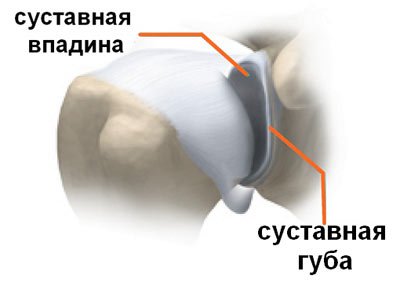
The articular lip serves as the site of attachment of the shoulder-scapular ligament complex and the DHDM tendon, which provide stabilization of the shoulder joint. Each of the ligaments resists dislocation of the shoulder at a certain angle of abduction. If there is a separation of the articular lip from the scapular cavity, the stabilizing function of the shoulder-scapular ligament complex is lost, so damage or separation of the lip always leads to the development of shoulder instability.
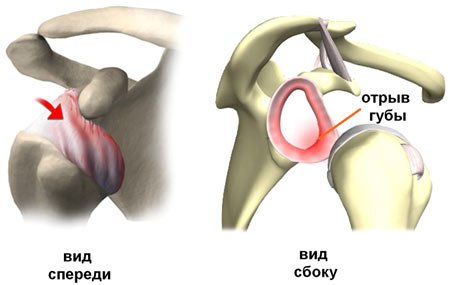
Separation of the anterior and lower part of the glenoid lip, and attached shoulder cords, leads to the lower front shoulder instability and dislocation, dislocation in its upper part with an attached tendon of the long head of the biceps muscle to the top of instability, the gap between the back of the lip, respectively to the rear of instability.
Instability of the shoulder leads to a sharp decrease in its function, especially in patients who lead an active lifestyle. This is especially true for people whose instability has turned into a habitual dislocation of the shoulder. These patients are forced to limit physical activity, constantly monitor their movements in the shoulder joint and avoid falls.

Separation of the anterior and lower part of the glenoid lip, and attached shoulder cords, leads to the lower front shoulder instability and dislocation, dislocation in its upper part with an attached tendon of the long head of the biceps muscle to the top of instability, the gap between the back of the lip, respectively to the rear of instability.
WHAT ARE THE SYMPTOMS OF DAMAGE TO THE ARTICULAR LIP OF THE SHOULDER?
Damage to the articular lip of the scapula is accompanied by pain in the shoulder, a feeling of clacking and instability of the shoulder joint.
DIAGNOSIS OF DAMAGE TO THE ARTICULAR LIP OF THE SHOULDER:
Clinical tests.
To suspect damage to the articular lip, you can use special diagnostic tests. Diagnostic tests should be performed by a doctor who has certain skills, a good knowledge of anatomy and experience in conducting a large number of patients. The diagnostic sensitivity of these tests is extremely high - the information content of some of them is at the level and even higher than that of the MRI examination of the shoulder.
Ultrasound diagnostics of the shoulder.
MRI diagnostics-should be performed in all patients with suspected damage to the articular lip, and the study should be carried out on a device of at least 1.5 Tesla. MRI images taken at 1 and less tesla units may not show damage to the articular lip and it will not be diagnosed in a timely manner.
According to world statistics, up to 40 % of injuries to the articular lip of the shoulder are not diagnosed and the damage can only be detected by performing an arthroscopic examination of the joint.
Arthroscopic diagnosis is the "gold standard of diagnosis" of damage to the articular lip, the most reliable method. With the help of a modern device - an arthroscope, the doctor can examine all the structures of the joint from the inside and identify even the most minor injuries.
CONSERVATIVE TREATMENT OF INJURIES OF THE ARTICULAR LIP OF THE SHOULDER:
Treatment of damage to the articular lip can be both conservative and operative. Conservative treatment consists in observing the patient's regime of painless loads, anti-inflammatory treatment in case of exacerbation, and undergoing a course of physiotherapy procedures.
SURGICAL TREATMENT OF INJURIES OF THE ARTICULAR LIP OF THE SHOULDER
However, the main method of treating damage to the articular lip is surgery, since only in this case, it is possible to sew the torn parts of the lip, perform reconstruction of its parts and damaged muscles and tendons. To date, the most modern method of surgical treatment of injuries to the articular lip of the shoulder is arthroscopy of the shoulder joint-an operation without an incision.
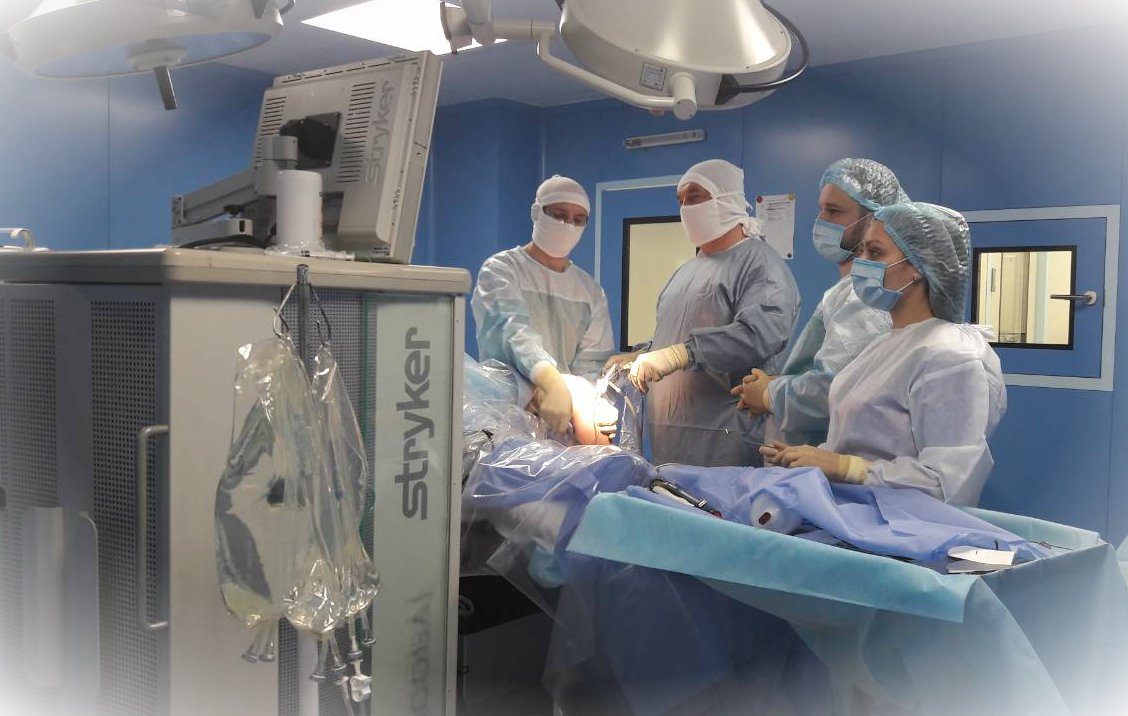
With the help of arthroscopy, we can perform the following manipulations: sew on the articular lip, if necessary, eliminate the damaged and non-viable parts of it, perform plastic surgery and restore the torn parts of the muscles, tendons, and eliminate bone damage. The operation for sewing (refixing) the articular lip to the articular cavity of the scapula is called the Bankart operation (in case of damage to the articular lip in the anterior, anterior-lower part of the joint). Stitching, and fixing the torn section of the articular lip to the edge of the articular cavity is performed with the help of special absorbable anchor retainers. Currently, there are quite a large number of different anchor retainers that differ in diameter (1.3-3.5 mm), absorbable (polylactic acid), or non-absorbable material (titanium), the number and type of threads, as well as the nodular or non-nodular method of fixing threads. The strength of the articular lip fixation depends on the correct choice of anchors, the correct technique of their installation and a sufficient volume of soft tissues. The number of anchors required for the Bankart operation depends on the size of the gap. Usually 2 or 3 anchors are installed.
In case of damage to the lip in combination with a bone defect of the edge of the articular cavity, operations are performed that include bone grafting - the Laterge operation. Laterge surgery is usually performed when the bone defect of the anterior-lower edge of the scapula is more than 25% (estimated by CT). Its meaning is to transplant a part of the beak process, with the muscles attached to it, into the defect zone on the anterior surface of the articular cavity, fixing the moved fragment is carried out with screws.
WHAT AFFECTS THE RESULTS OF SHOULDER ARTHROSCOPY?
For high-quality performance of shoulder arthroscopy and obtaining the most successful results of the operation, 3 conditions are necessary:
An experienced orthopedic surgeon.
Shoulder arthroscopy is a technologically more complex operation than, for example, knee arthroscopy. We can say that this is aerobatics, even for an experienced orthopedic surgeon engaged in arthroscopy of the joints. According to international standards, a surgeon who practices arthroscopic operations on the shoulder can be considered experienced if he has performed at least 1000 such operations, which is quite a difficult task.
Sufficient level of equipment for performing arthroscopy.
It is necessary to have a full set of expensive high-tech equipment: a monitor, a digital video camera, an optical device (an astroscope with a diameter of 4 to 4.5 mm), a xenon light source with a power of at least 150 W, a device for supplying a solution that washes the joint during surgery (an arthroscopic pump), a device for coagulation and cutting tissues in solution (a vaporizer), a device for mechanical removal of soft and bone tissues. (shaver), a special set of tools for performing various types of restorative interventions. The absence of at least one of the above makes it impossible to perform a high-quality shoulder arthroscopy.
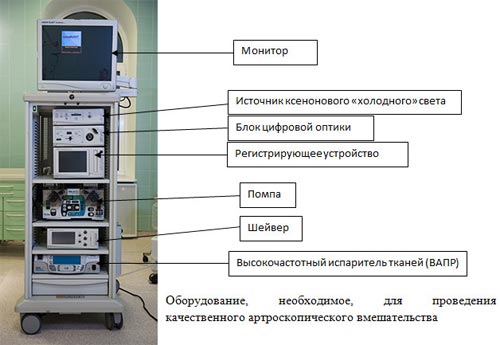
Adequate anaesthetic support.
REHABILITATION AFTER ARTHROSCOPY OF THE SHOULDER JOINT:
Properly performed surgery allows you to quickly start active rehabilitation, to prevent the development of complications and optimize the recovery time.
After arthroscopy of the shoulder, the arm is immobilized in the withdrawal position for several weeks with a special splint. This immobilization reduces the tension of the tendons and reduces the risk of re-rupture, creating favorable conditions for better healing of the tendon. The duration of immobilization is determined by the surgeon who performed the operation, since only he can assess the condition of the tendons and the strength of the suture performed.
From the first weeks after shoulder arthroscopy, patients are recommended to perform special exercises aimed at developing movements in the shoulder joint. However, their intensity and priority should be selected by the operating doctor and an experienced rehabilitologist.
In our Medical Center, patients after shoulder arthroscopy are offered a whole range of rehabilitation measures. The rehabilitation program is selected individually and includes:
Special exercises and physical therapy at the rehabilitation specialists of our Medical Center by the method of kinesiotherapy. Exercises are aimed at improving the volume of movement in the joint, preventing the development of contractures, increasing strength and endurance in the muscles of the shoulder girdle. The exercises are selected individually and performed on professional equipment in the rehabilitation hall, under the supervision of experienced rehabilitation instructors. Part of the exercises is signed to the patient for carrying out at home.
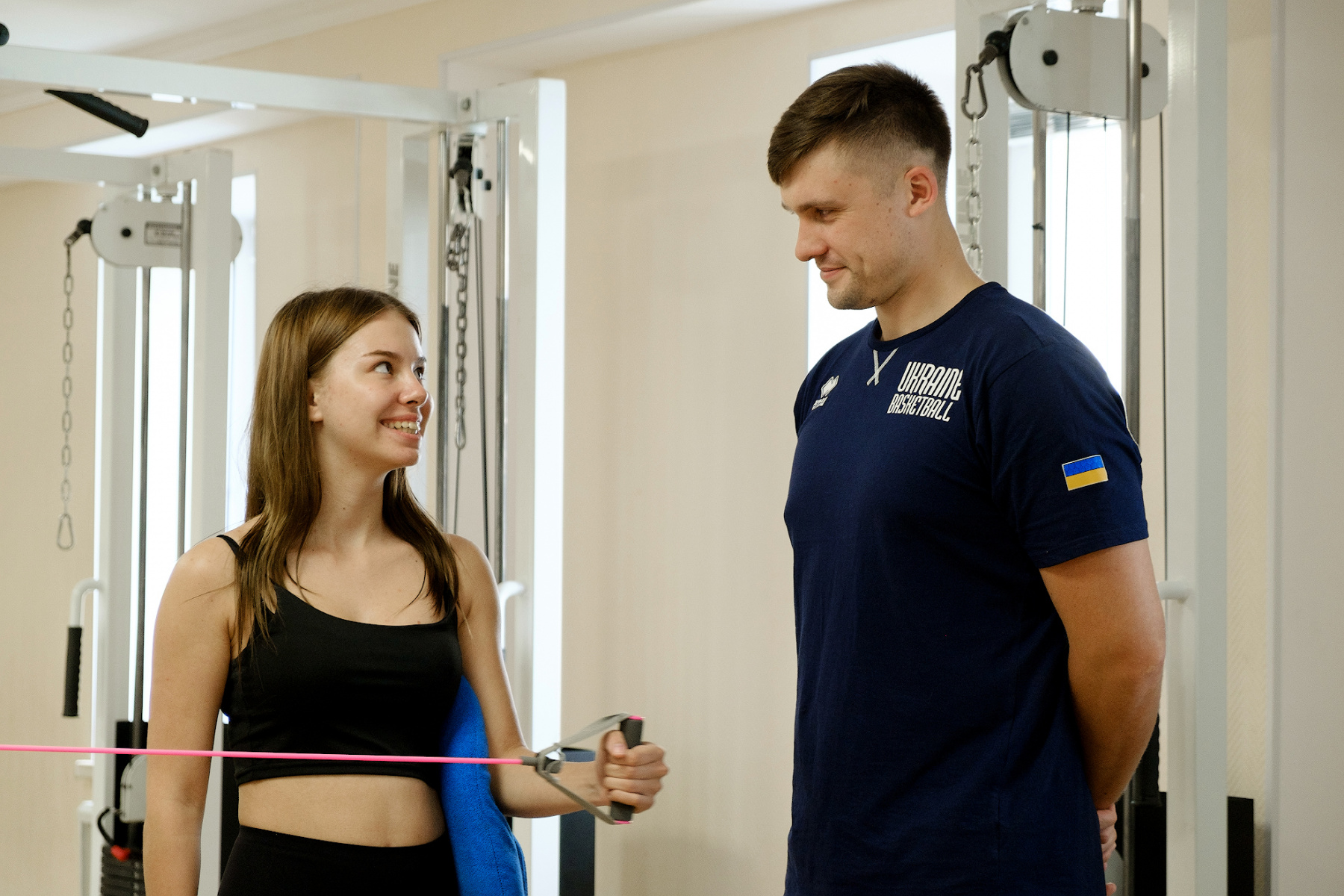
Physical therapy on the professional equipment of the BTL company: magnetic therapy, ultrasound therapy with the introduction of drugs, electrotherapy-reduce pain and swelling in the operated shoulder, prevent the formation of adhesions and scars, promote better healing, restore muscle tone.
ENTRUST THE CARE OF YOUR HEALTH TO REAL PROFESSIONALS!
The articular lip of the shoulder is a rim of fibrous cartilage that attaches to the edge of the articular cavity of the scapula. Attaching in this way, the lip contributes to the deepening of a fairly flat depression of the scapula, creating conditions for better insertion of the head of the humerus into it. In addition, the articular lip has a "sucking" effect, contributing to an even closer contact of the articular surfaces of the humerus and the scapula cavity.

The articular lip serves as the site of attachment of the shoulder-scapular ligament complex and the DHDM tendon, which provide stabilization of the shoulder joint. Each of the ligaments resists dislocation of the shoulder at a certain angle of abduction. If there is a separation of the articular lip from the scapular cavity, the stabilizing function of the shoulder-scapular ligament complex is lost, so damage or separation of the lip always leads to the development of shoulder instability.

Separation of the anterior and lower part of the glenoid lip, and attached shoulder cords, leads to the lower front shoulder instability and dislocation, dislocation in its upper part with an attached tendon of the long head of the biceps muscle to the top of instability, the gap between the back of the lip, respectively to the rear of instability.
Instability of the shoulder leads to a sharp decrease in its function, especially in patients who lead an active lifestyle. This is especially true for people whose instability has turned into a habitual dislocation of the shoulder. These patients are forced to limit physical activity, constantly monitor their movements in the shoulder joint and avoid falls.

Separation of the anterior and lower part of the glenoid lip, and attached shoulder cords, leads to the lower front shoulder instability and dislocation, dislocation in its upper part with an attached tendon of the long head of the biceps muscle to the top of instability, the gap between the back of the lip, respectively to the rear of instability.
WHAT ARE THE SYMPTOMS OF DAMAGE TO THE ARTICULAR LIP OF THE SHOULDER?
Damage to the articular lip of the scapula is accompanied by pain in the shoulder, a feeling of clacking and instability of the shoulder joint.
DIAGNOSIS OF DAMAGE TO THE ARTICULAR LIP OF THE SHOULDER:
Clinical tests.
To suspect damage to the articular lip, you can use special diagnostic tests. Diagnostic tests should be performed by a doctor who has certain skills, a good knowledge of anatomy and experience in conducting a large number of patients. The diagnostic sensitivity of these tests is extremely high - the information content of some of them is at the level and even higher than that of the MRI examination of the shoulder.
Ultrasound diagnostics of the shoulder.
MRI diagnostics-should be performed in all patients with suspected damage to the articular lip, and the study should be carried out on a device of at least 1.5 Tesla. MRI images taken at 1 and less tesla units may not show damage to the articular lip and it will not be diagnosed in a timely manner.
According to world statistics, up to 40 % of injuries to the articular lip of the shoulder are not diagnosed and the damage can only be detected by performing an arthroscopic examination of the joint.
Arthroscopic diagnosis is the "gold standard of diagnosis" of damage to the articular lip, the most reliable method. With the help of a modern device - an arthroscope, the doctor can examine all the structures of the joint from the inside and identify even the most minor injuries.
CONSERVATIVE TREATMENT OF INJURIES OF THE ARTICULAR LIP OF THE SHOULDER:
Treatment of damage to the articular lip can be both conservative and operative. Conservative treatment consists in observing the patient's regime of painless loads, anti-inflammatory treatment in case of exacerbation, and undergoing a course of physiotherapy procedures.
SURGICAL TREATMENT OF INJURIES OF THE ARTICULAR LIP OF THE SHOULDER
However, the main method of treating damage to the articular lip is surgery, since only in this case, it is possible to sew the torn parts of the lip, perform reconstruction of its parts and damaged muscles and tendons. To date, the most modern method of surgical treatment of injuries to the articular lip of the shoulder is arthroscopy of the shoulder joint-an operation without an incision.

With the help of arthroscopy, we can perform the following manipulations: sew on the articular lip, if necessary, eliminate the damaged and non-viable parts of it, perform plastic surgery and restore the torn parts of the muscles, tendons, and eliminate bone damage. The operation for sewing (refixing) the articular lip to the articular cavity of the scapula is called the Bankart operation (in case of damage to the articular lip in the anterior, anterior-lower part of the joint). Stitching, and fixing the torn section of the articular lip to the edge of the articular cavity is performed with the help of special absorbable anchor retainers. Currently, there are quite a large number of different anchor retainers that differ in diameter (1.3-3.5 mm), absorbable (polylactic acid), or non-absorbable material (titanium), the number and type of threads, as well as the nodular or non-nodular method of fixing threads. The strength of the articular lip fixation depends on the correct choice of anchors, the correct technique of their installation and a sufficient volume of soft tissues. The number of anchors required for the Bankart operation depends on the size of the gap. Usually 2 or 3 anchors are installed.
In case of damage to the lip in combination with a bone defect of the edge of the articular cavity, operations are performed that include bone grafting - the Laterge operation. Laterge surgery is usually performed when the bone defect of the anterior-lower edge of the scapula is more than 25% (estimated by CT). Its meaning is to transplant a part of the beak process, with the muscles attached to it, into the defect zone on the anterior surface of the articular cavity, fixing the moved fragment is carried out with screws.
WHAT AFFECTS THE RESULTS OF SHOULDER ARTHROSCOPY?
For high-quality performance of shoulder arthroscopy and obtaining the most successful results of the operation, 3 conditions are necessary:
An experienced orthopedic surgeon.
Shoulder arthroscopy is a technologically more complex operation than, for example, knee arthroscopy. We can say that this is aerobatics, even for an experienced orthopedic surgeon engaged in arthroscopy of the joints. According to international standards, a surgeon who practices arthroscopic operations on the shoulder can be considered experienced if he has performed at least 1000 such operations, which is quite a difficult task.
Sufficient level of equipment for performing arthroscopy.
It is necessary to have a full set of expensive high-tech equipment: a monitor, a digital video camera, an optical device (an astroscope with a diameter of 4 to 4.5 mm), a xenon light source with a power of at least 150 W, a device for supplying a solution that washes the joint during surgery (an arthroscopic pump), a device for coagulation and cutting tissues in solution (a vaporizer), a device for mechanical removal of soft and bone tissues. (shaver), a special set of tools for performing various types of restorative interventions. The absence of at least one of the above makes it impossible to perform a high-quality shoulder arthroscopy.

Adequate anaesthetic support.
REHABILITATION AFTER ARTHROSCOPY OF THE SHOULDER JOINT:
Properly performed surgery allows you to quickly start active rehabilitation, to prevent the development of complications and optimize the recovery time.
After arthroscopy of the shoulder, the arm is immobilized in the withdrawal position for several weeks with a special splint. This immobilization reduces the tension of the tendons and reduces the risk of re-rupture, creating favorable conditions for better healing of the tendon. The duration of immobilization is determined by the surgeon who performed the operation, since only he can assess the condition of the tendons and the strength of the suture performed.
From the first weeks after shoulder arthroscopy, patients are recommended to perform special exercises aimed at developing movements in the shoulder joint. However, their intensity and priority should be selected by the operating doctor and an experienced rehabilitologist.
In our Medical Center, patients after shoulder arthroscopy are offered a whole range of rehabilitation measures. The rehabilitation program is selected individually and includes:
Special exercises and physical therapy at the rehabilitation specialists of our Medical Center by the method of kinesiotherapy. Exercises are aimed at improving the volume of movement in the joint, preventing the development of contractures, increasing strength and endurance in the muscles of the shoulder girdle. The exercises are selected individually and performed on professional equipment in the rehabilitation hall, under the supervision of experienced rehabilitation instructors. Part of the exercises is signed to the patient for carrying out at home.

Physical therapy on the professional equipment of the BTL company: magnetic therapy, ultrasound therapy with the introduction of drugs, electrotherapy-reduce pain and swelling in the operated shoulder, prevent the formation of adhesions and scars, promote better healing, restore muscle tone.
ENTRUST THE CARE OF YOUR HEALTH TO REAL PROFESSIONALS!
Product rating is: 2 from 5
Please rate the product:
Advantages of treatment in Orthopedics by Ruslan Sergienko
-
10 years on medical services in Ukraine
-
> 25 years of experience with leading specialists
-
Anna Vovchenko and Ruslan Sergienko are recognized opinion leaders among the orthopedic traumatologists
-
> 150,000 consultations were held
-
> 7,500 surgeries were performed
-
All types of pain management
-
The operating unit is equipped according to international standards
-
Availability of all medicines and supplies
-
Single rooms, equipped with the characteristics of orthopedic patients
-
Three meals a day
-
Postoperative rehabilitation by certified specialists
-
Pricing Transparency
